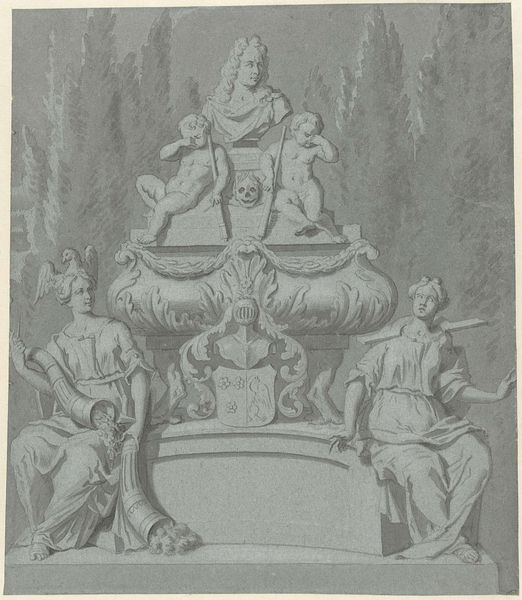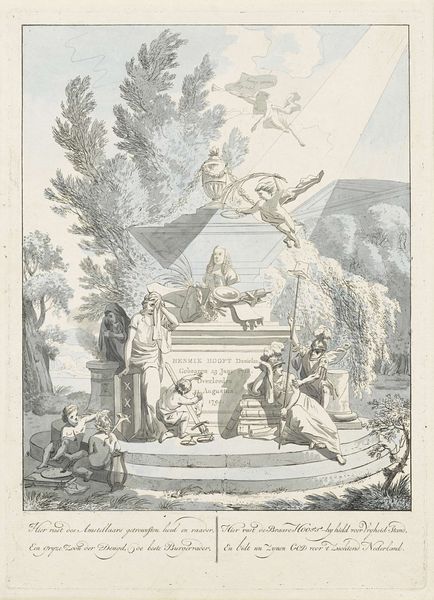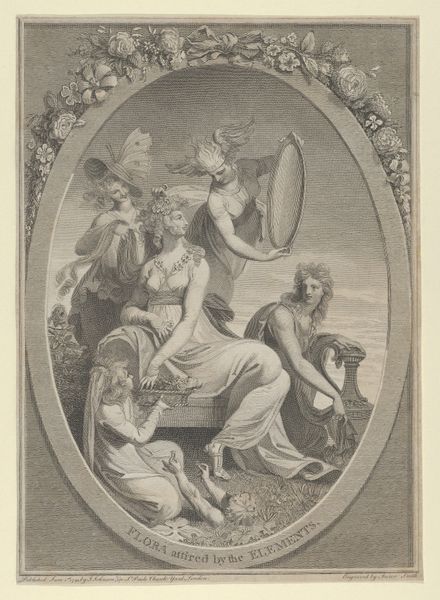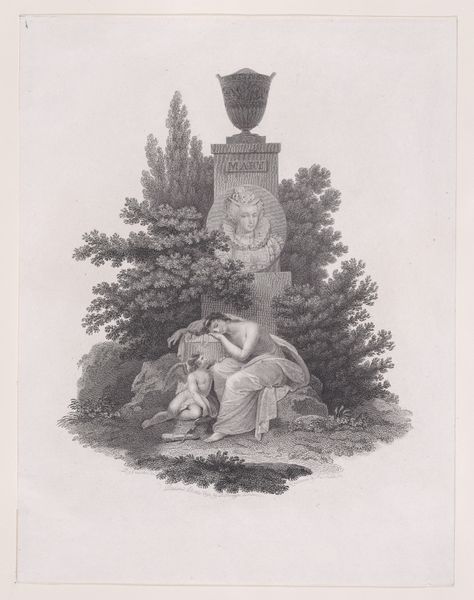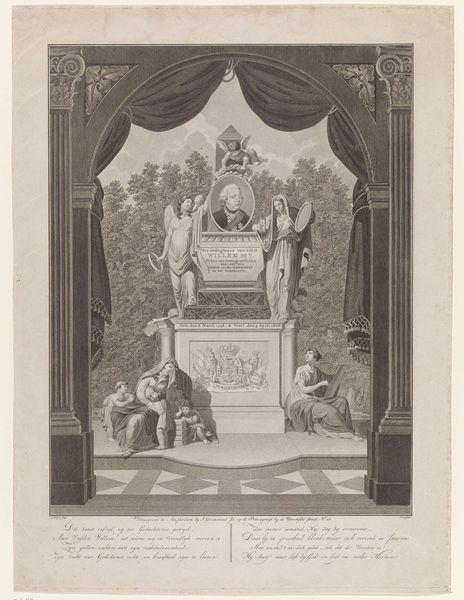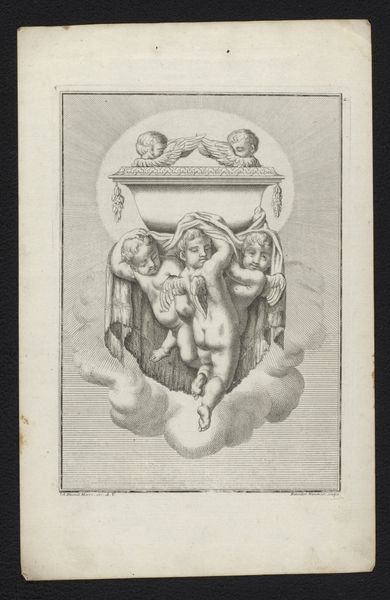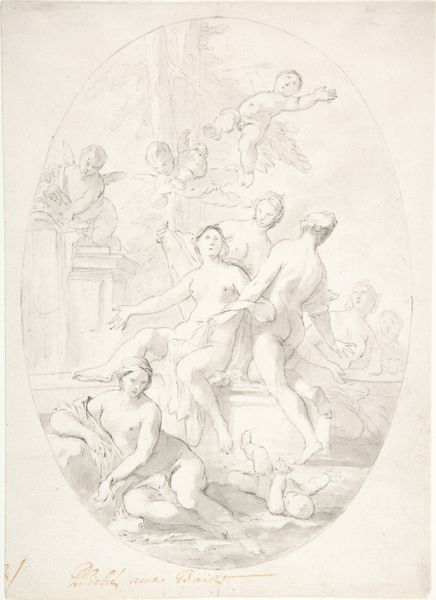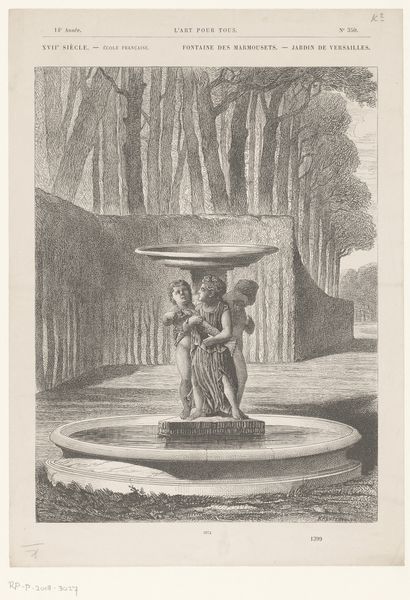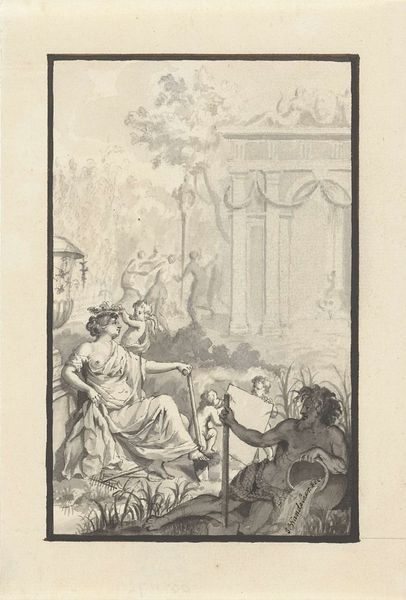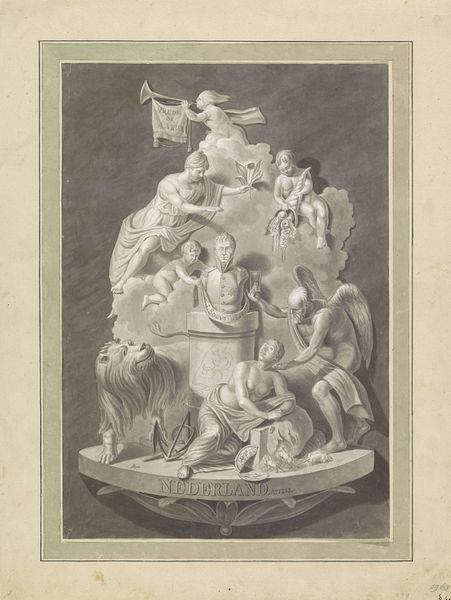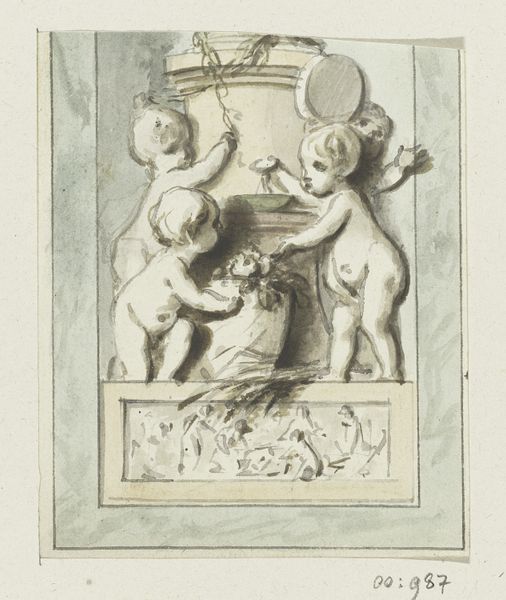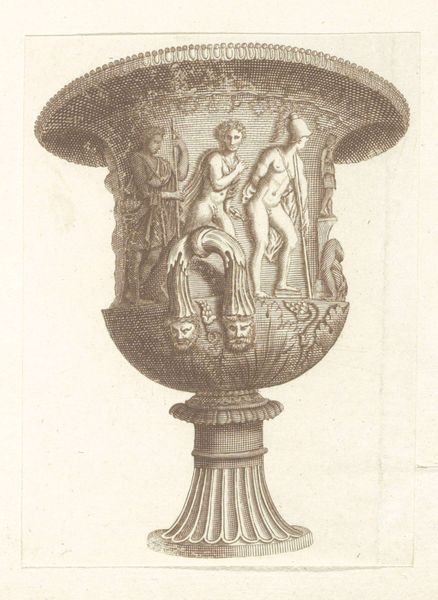
Dimensions: height 350 mm, width 274 mm
Copyright: Rijks Museum: Open Domain
This is Frans Decker's design for a tomb monument, made with pen in grey ink and grey wash around the 1730s in the Netherlands. It reveals the early modern obsession with the aesthetics of death. We see classical figures, cherubs, and symbols of mortality combined in a grand, baroque composition. The Dutch Republic was a profoundly visual culture, in which the display of wealth and status was of paramount importance. Funerary monuments became a key means of proclaiming social standing for elite families. Decker, working in Amsterdam, was at the heart of this culture. The design reflects both classical and Christian traditions. Busts and urns were common features of Roman tombs. The cherubs evoke the promise of resurrection. Meanwhile, the skulls are a clear memento mori, a reminder of the transience of earthly life. To understand this design fully, we can examine period publications on garden design, sculpture, and architecture. By studying the social history of death in the Dutch Republic, we can appreciate how this monument would have functioned as a powerful statement of identity and belief.
Comments
No comments
Be the first to comment and join the conversation on the ultimate creative platform.
